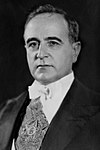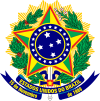Related Research Articles

The Brazilian Armed Forces are the unified military forces of the Federative Republic of Brazil. Consisting of three service branches, it comprises the Brazilian Army, the Brazilian Navy and the Brazilian Air Force.

Luiz Inácio Lula da Silva, also known as Lula da Silva or simply Lula, is a Brazilian politician who is the 39th and current president of Brazil. A member of the Workers' Party, he was also the 35th president of Brazil from 2003 to 2010.
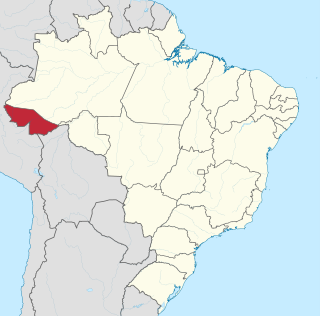
Acre ( ) is a state located in the west of the North Region of Brazil and the Amazonia Legal. Located in the westernmost part of the country, at a two-hour time difference from Brasília, Acre is bordered clockwise by the Brazilian states of Amazonas and Rondônia to the north and east, along with an international border with the Bolivian department of Pando to the southeast, and the Peruvian regions of Madre de Dios, Ucayali and Loreto to the south and west. Its capital and largest city is Rio Branco. Other important places include Cruzeiro do Sul, Sena Madureira, Tarauacá and Feijó. The state, which has 0.42% of the Brazilian population, generates 0.2% of the Brazilian GDP.

Amazonas is a state of Brazil, located in the North Region in the north-western corner of the country. It is the largest Brazilian state by area and the ninth-largest country subdivision in the world. It is the largest country subdivision in South America, being greater than the areas of Chile, Paraguay, and Uruguay combined. Mostly located in the Southern Hemisphere, Amazonas is the third-largest country subdivision in the Southern Hemisphere after the Australian states of Western Australia and Queensland. Located entirely in the Western Hemisphere, it is the fourth-largest country subdivision in the Western Hemisphere after Greenland, Nunavut, and Alaska. If independent, Amazonas could become the sixteenth-largest country in the world, slightly larger than Mongolia. Neighbouring states are Roraima, Pará, Mato Grosso, Rondônia, and Acre. It also borders the nations of Peru, Colombia and Venezuela. This includes the Departments of Amazonas, Vaupés and Guainía in Colombia, as well as the Amazonas state in Venezuela, and the Loreto Region in Peru.
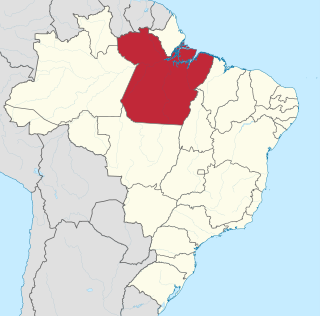
Pará is a state of Brazil, located in northern Brazil and traversed by the lower Amazon River. It borders the Brazilian states of Amapá, Maranhão, Tocantins, Mato Grosso, Amazonas and Roraima. To the northwest are the borders of Guyana and Suriname, to the northeast of Pará is the Atlantic Ocean. The capital and largest city is Belém, which is located at the Marajó bay, near the estuary of the Amazon river. The state, which is home to 4.1% of the Brazilian population, is responsible for just 2.2% of the Brazilian GDP.

The First Brazilian Republic, also referred to as the Old Republic, officially the Republic of the United States of Brazil, refers to the period of Brazilian history from 1889 to 1930. The Old Republic began with the deposition of Emperor Pedro II in 1889, and ended with the Brazilian Revolution of 1930 that installed Getúlio Vargas as a new president. During the First Brazilian Republic, Brazil was dominated by a form of machine politics known as coronelism, in which the political and economic spheres were dominated by large landholders. The most powerful of such landholders were the coffee industry of São Paulo and the dairy industry of Minas Gerais. Because of the power of these two industries, the Old Republic's political system has been described as "milk coffee politics."

Francisco Alves Mendes Filho, better known as Chico Mendes, was a Brazilian rubber tapper, trade union leader and environmentalist. He fought to preserve the Amazon rainforest, and advocated for the human rights of Brazilian peasants and Indigenous peoples. He was assassinated by a rancher on 22 December 1988. The Chico Mendes Institute for Biodiversity Conservation, a body under the jurisdiction of the Brazilian Ministry of the Environment, is named in his honor.

The Vargas Era is the period in the history of Brazil between 1930 and 1946 when the country was governed by president Getúlio Vargas. The period from 1930 to 1937 is known as the Second Brazilian Republic, and the other part of Vargas Era, from 1937 until 1946 is known as the Third Brazilian Republic.
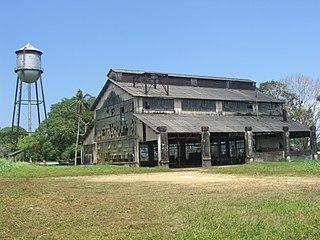
Fordlândia is a district and adjacent area of 14,268 square kilometres (5,509 sq mi) in the city of Aveiro, in the Brazilian state of Pará. It is located on the east banks of the Tapajós river roughly 300 kilometres (190 mi) south of the city of Santarém.

Hermes Rodrigues da Fonseca was a Brazilian field marshal and politician who served as the eighth president of Brazil between 1910 and 1914. He was a nephew of marshal Deodoro da Fonseca, the first president of Brazil, and general João Severiano da Fonseca, patron of the Army Health Service. His parents were the marshal Hermes Ernesto da Fonseca and Rita Rodrigues Barbosa.
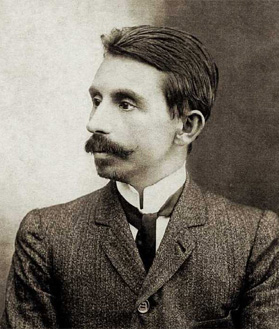
Euclides da Cunha was a Brazilian journalist, sociologist and engineer. His most important work is Os Sertões, a non-fictional account of the military expeditions promoted by the Brazilian government against the rebellious village of Canudos, known as the War of Canudos.

The Amazon rubber cycle or boom was an important part of the economic and social history of Brazil and Amazonian regions of neighboring countries, being related to the extraction and commercialization of rubber. Centered in the Amazon Basin, the boom resulted in a large expansion of colonization in the area, attracting immigrant workers, generating wealth, causing cultural and social transformations, and disrupting local indigenous societies.

Before the arrival of the Europeans, the lands that now constitute Brazil were occupied, fought over and settled by diverse tribes. Thus, the history of Brazil begins with the indigenous people in Brazil. The Portuguese arrived to the land that would become Brazil on April 22, 1500, commanded by Pedro Álvares Cabral, an explorer on his way to India under the sponsorship of the Kingdom of Portugal and the support of the Catholic Church.
Socialism in Brazil is generally thought to trace back to the first half of the 19th century. There are documents evidencing the diffusion of socialist ideas since then, but these were individual initiatives with no ability to form groups with actual political activism.

The Acre War, known in Brazil as Acrean Revolution and in Spanish as Guerra del Acre was a border conflict between Bolivia and the First Brazilian Republic over the Acre Region, which was rich in rubber and gold deposits. The conflict had two phases between 1899 and 1903 and ended with an Acrean victory and the subsequent Treaty of Petrópolis, which ceded Acre to Brazil. The outcome also affected territories disputed with Peru.

The Madeira-Mamoré Railroad is an abandoned railroad built in the Brazilian state of Rondônia between 1907 and 1912. The railroad links the cities of Porto Velho and Guajará-Mirim. It became known as the "Devil's Railroad" because thousands of construction workers died from tropical diseases and violence.
The Cazumbá-Iracema Extractive Reserve is an extractive reserve in the state of Acre, Brazil. The inhabitants extract rubber, Brazil nuts and other products from the forest for their own consumption or for sale, hunt, fish and engage in small-scale farming and animal husbandry. The reserve was created in 2002 as a sustainable use conservation area after a long campaign by the rubber tappers to prevent the government from evicting them and clearing the Amazon rainforest for cattle ranching. The reserve is rich in biodiversity, and helps form a buffer zone for the adjoining Chandless State Park. Due to decreases in rubber prices, some families want to clear the forest to raise cattle, which is seen as more profitable.

José Plácido de Castro was a Brazilian soldier, surveyor, rubber producer and politician who led the armed revolt during the Acre War of 1902–3, when the Republic of Acre broke away from Bolivia. He was the president of the state of Acre just before and after it was purchased by Brazil. After the war he became extremely wealthy as a rubber producer, and made many enemies. He was assassinated in 1908. He is considered a hero of Brazil.
The History of Acre refers to the history of the Brazilian northern state, and also reveals important aspects of Brazilian history, especially during the 19th and 20th centuries.
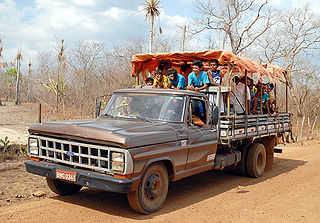
Northeastern migration or the northeastern exodus refers to a secular migratory process of populations coming from the Northeast region of Brazil to other parts of the country, in particular to the center-south. This migratory movement had and has great relevance in the history of migration in Brazil since the time of the Empire.
References
- 1 2 3 "Brazil 'rubber soldiers' fight for recognition - Americas - International Herald Tribune", by Larry Rohter, The New York Times , October 13, 2006 (retrieved Feb 11, 2013)
- 1 2 "Exército da borracha", Época, March 26, 2004 (retrieved February 12, 2013)
- ↑
